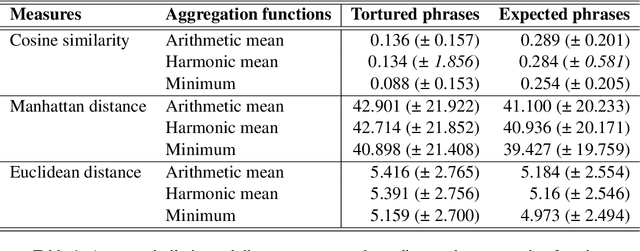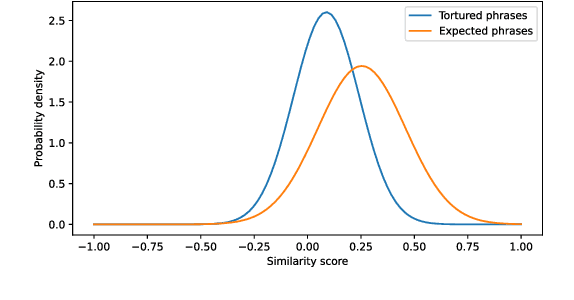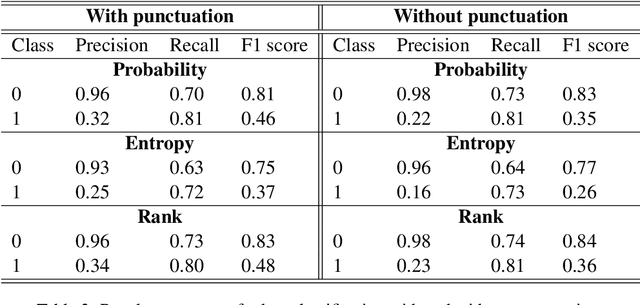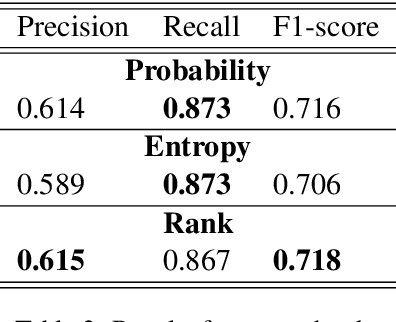Martin Lentschat
SIGMA, GETALP
Detection of tortured phrases in scientific literature
Feb 02, 2024



Abstract:This paper presents various automatic detection methods to extract so called tortured phrases from scientific papers. These tortured phrases, e.g. flag to clamor instead of signal to noise, are the results of paraphrasing tools used to escape plagiarism detection. We built a dataset and evaluated several strategies to flag previously undocumented tortured phrases. The proposed and tested methods are based on language models and either on embeddings similarities or on predictions of masked token. We found that an approach using token prediction and that propagates the scores to the chunk level gives the best results. With a recall value of .87 and a precision value of .61, it could retrieve new tortured phrases to be submitted to domain experts for validation.
NanoNER: Named Entity Recognition for nanobiology using experts' knowledge and distant supervision
Jan 30, 2024Abstract:Here we present the training and evaluation of NanoNER, a Named Entity Recognition (NER) model for Nanobiology. NER consists in the identification of specific entities in spans of unstructured texts and is often a primary task in Natural Language Processing (NLP) and Information Extraction. The aim of our model is to recognise entities previously identified by domain experts as constituting the essential knowledge of the domain. Relying on ontologies, which provide us with a domain vocabulary and taxonomy, we implemented an iterative process enabling experts to determine the entities relevant to the domain at hand. We then delve into the potential of distant supervision learning in NER, supporting how this method can increase the quantity of annotated data with minimal additional manpower. On our full corpus of 728 full-text nanobiology articles, containing more than 120k entity occurrences, NanoNER obtained a F1-score of 0.98 on the recognition of previously known entities. Our model also demonstrated its ability to discover new entities in the text, with precision scores ranging from 0.77 to 0.81. Ablation experiments further confirmed this and allowed us to assess the dependency of our approach on the external resources. It highlighted the dependency of the approach to the resource, while also confirming its ability to rediscover up to 30% of the ablated terms. This paper details the methodology employed, experimental design, and key findings, providing valuable insights and directions for future related researches on NER in specialized domain. Furthermore, since our approach require minimal manpower , we believe that it can be generalized to other specialized fields.
Investigating the detection of Tortured Phrases in Scientific Literature
Oct 24, 2022Abstract:With the help of online tools, unscrupulous authors can today generate a pseudo-scientific article and attempt to publish it. Some of these tools work by replacing or paraphrasing existing texts to produce new content, but they have a tendency to generate nonsensical expressions. A recent study introduced the concept of 'tortured phrase', an unexpected odd phrase that appears instead of the fixed expression. E.g. counterfeit consciousness instead of artificial intelligence. The present study aims at investigating how tortured phrases, that are not yet listed, can be detected automatically. We conducted several experiments, including non-neural binary classification, neural binary classification and cosine similarity comparison of the phrase tokens, yielding noticeable results.
 Add to Chrome
Add to Chrome Add to Firefox
Add to Firefox Add to Edge
Add to Edge